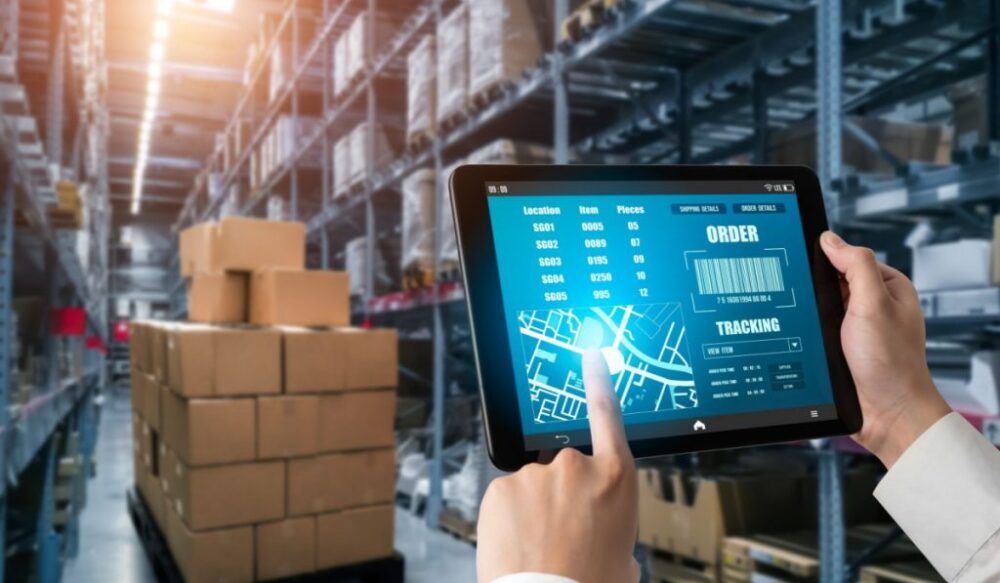
Supply chain visibility is critical to business operations, enabling businesses to track their supply chain processes and operations in real time. Supply chain visibility software plays a vital role in enhancing the visibility of the entire supply chain. The software gives businesses an end to end supply chain visibility, enabling them to make informed decisions based on accurate and real-time data. This article will explore the advantages of supply chain visibility software and how it can be leveraged for improved decision-making.
Table of Contents
Exploring Advantages of Supply Chain Visibility Software

Supply chain visibility software provides businesses with a complete view of their supply chain operations. It enables businesses to track their inventory levels, demand planning, production scheduling, warehouse management, procurement, and sourcing optimization, and supplier collaboration.
Supply chain visibility software is a powerful tool that gives businesses real-time visibility into their supply chain operations. This enables businesses to identify inefficiencies in their supply chain and take corrective actions to improve their supply chain performance.
Analyzing Benefits and Risks of Implementing Supply Chain Visibility Solutions
Implementing supply chain visibility solutions can provide businesses numerous benefits, including increased supply chain efficiency, improved supplier collaboration, enhanced inventory management, better demand planning, and reduced supply chain risks. However, it is essential to consider the potential risks associated with implementing these solutions.
One of the primary risks associated with implementing supply chain visibility solutions is the software’s cost. The cost of implementing supply chain visibility software can be high depending on the organisation’s size and the supply chain’s complexity. This cost can include licensing fees, hardware costs, and implementation fees. It is essential for businesses to carefully consider the costs and benefits of implementing integrated supply chains visibility solutions before making a decision.
Another risk associated with implementing supply chain visibility solutions is data security concerns. Supply chain visibility software requires access to sensitive data such as supplier, customer, and financial information. It is critical to ensure that the software is secure and that appropriate security measures are in place to protect sensitive information.
Finally, implementing supply chain visibility solutions can disrupt operations during the implementation process. It is essential for businesses to carefully plan the implementation process and ensure that there is minimal disruption to operations. This can include training employees on the new software, ensuring that data is accurately transferred to the new system, and identifying potential areas of disruption before implementing the software.
Technologies for Enhancing Supply Chain Visibility

Several technologies can be leveraged to enhance supply chain visibility. One of the most commonly used technologies is supply network modeling. Supply network modeling enables businesses to model their supply chain operations and identify inefficiencies in the supply chain.
Other technologies that can be leveraged to enhance supply chain visibility include demand planning tools, production scheduling software, and warehouse management systems. These technologies give businesses real-time visibility into their supply chain operations, enabling them to make informed decisions based on accurate and up-to-date data.
Leveraging Data Analytics for Improved Decision-Making
Data analytics is critical in enhancing supply chain visibility by providing businesses with real-time insights into their operations. By analyzing supply chain data, businesses can identify areas for improvement, optimize their supply chain operations, and make informed decisions based on accurate and up-to-date information.
One of the key benefits of end-to-end supply chain analytics is that it enables businesses to identify patterns and trends in their supply chain operations. By analyzing historical data, businesses can identify demand, supply, and inventory trends. This information can be used to optimize production schedules, improve inventory management, and reduce supply chain risks. Data analytics can also help businesses to identify the root causes of supply chain issues and take corrective actions to address them.
Data analytics can also help businesses to improve their supplier collaboration. By analyzing procurement and sourcing optimization, supplier data, businesses can identify which suppliers are performing well and which are not meeting their expectations. This information can be used to optimize supplier relationships and improve supplier performance. For example, if a supplier is consistently delivering late, data analytics can be used to identify the root cause of the problem and work with the supplier to address it.
Another key benefit of data analytics is that it enables businesses to track key performance indicators (KPIs) in real-time. KPIs such as on-time delivery, lead time, and inventory turns can be monitored in real-time using data analytics. This enables businesses to identify potential issues before they become significant problems and take corrective actions to address them. Real-time monitoring of KPIs also enables businesses to track their progress toward their supply chain goals and adjust as needed.
Data analytics can also help businesses to improve their supply chain risk management. By analyzing supply chain data, businesses can identify potential risks and develop mitigation strategies to address them. For example, suppose a supplier is located in a high-risk area prone to natural disasters. In that case, data analytics can identify alternative suppliers or develop contingency plans in case of a disruption.
Assessing the Cost of Supply Chain Visibility Software

One of the major concerns associated with implementing supply chain visibility software is the cost of the software. The cost of supply chain digitalization visibility software varies depending on the software’s complexity and the organization’s size.
However, the benefits of implementing supply chain visibility software often outweigh the cost. By implementing supply chain visibility software, businesses can improve their supply chain efficiency, reduce supply chain risks, and enhance their overall supply chain performance.







